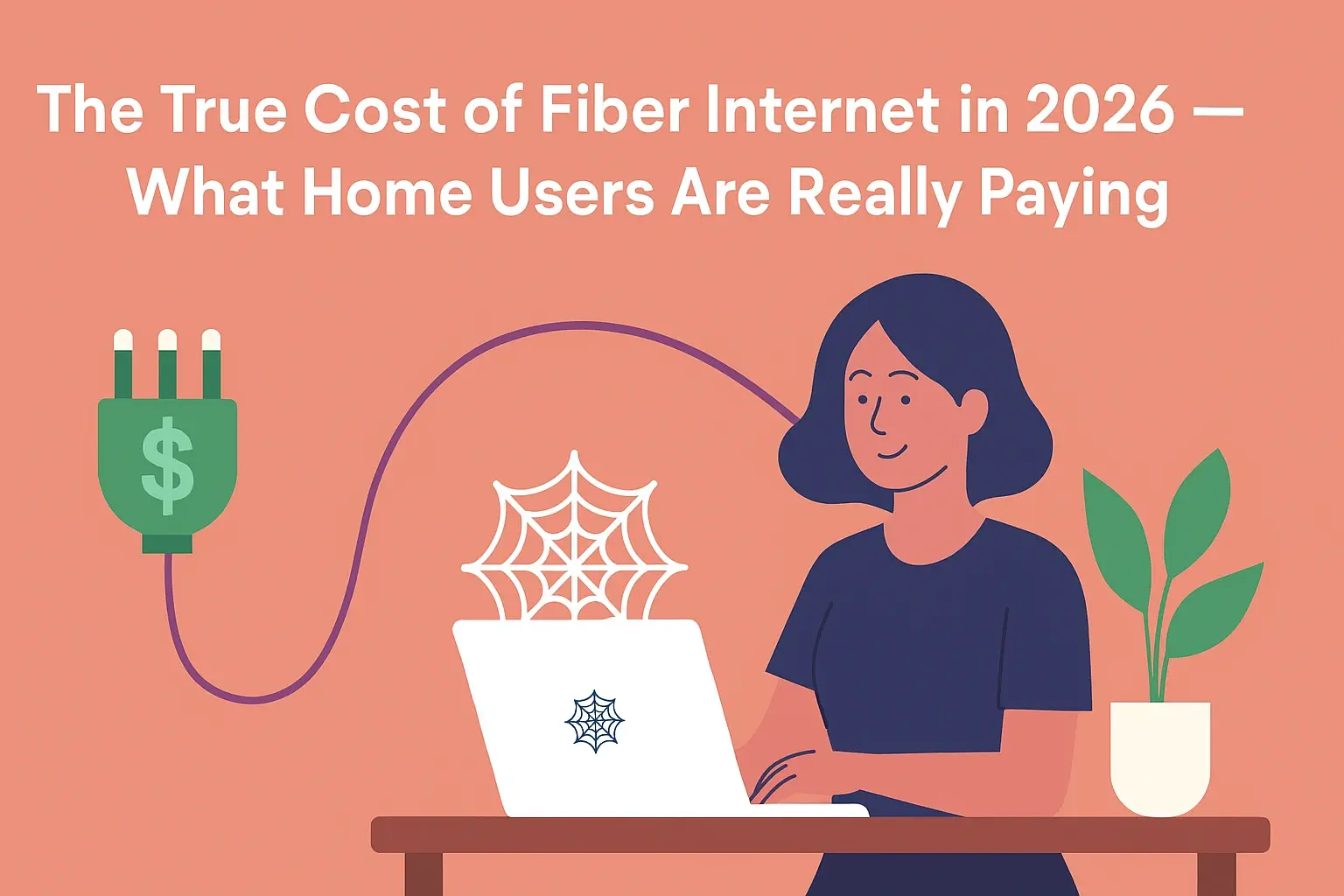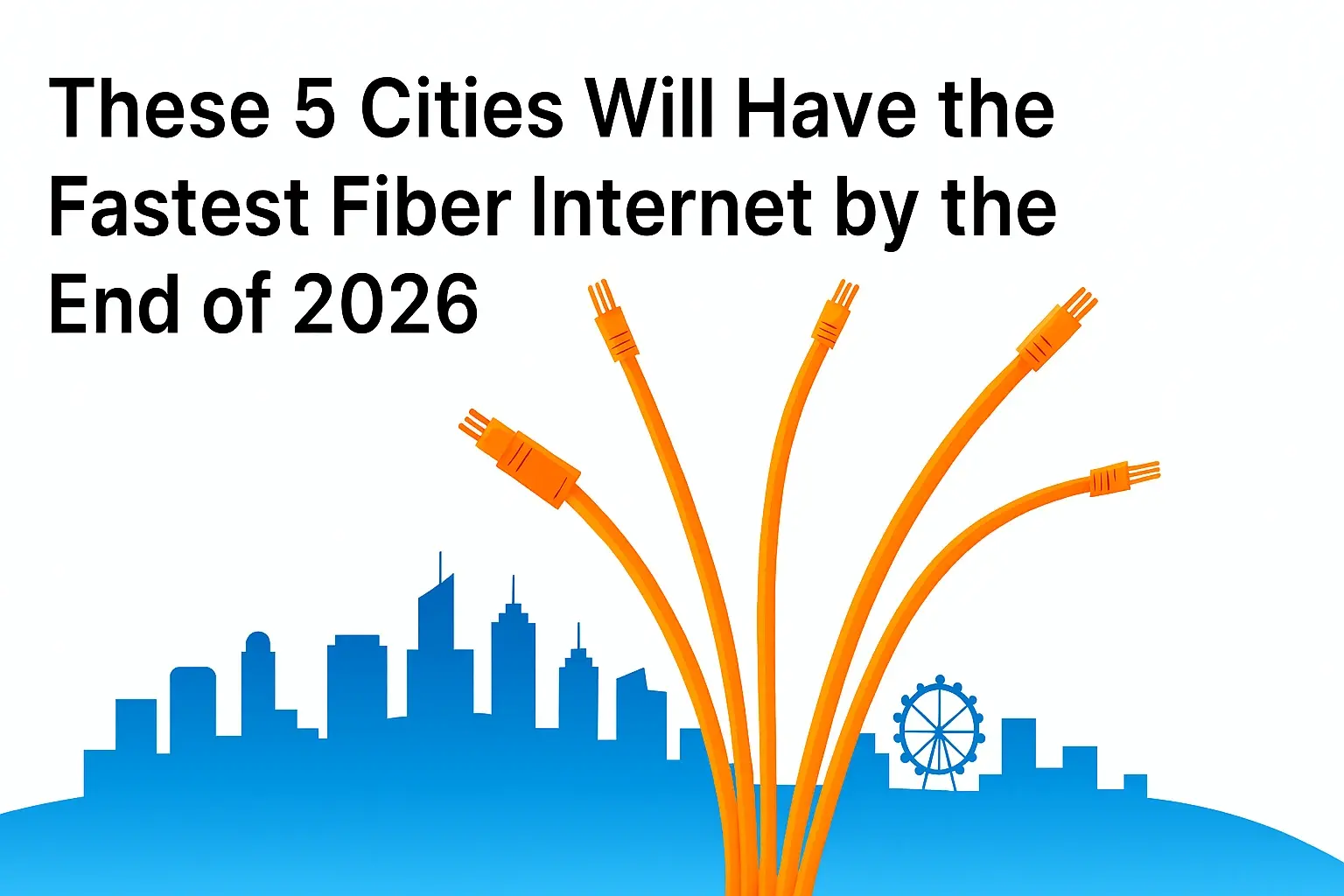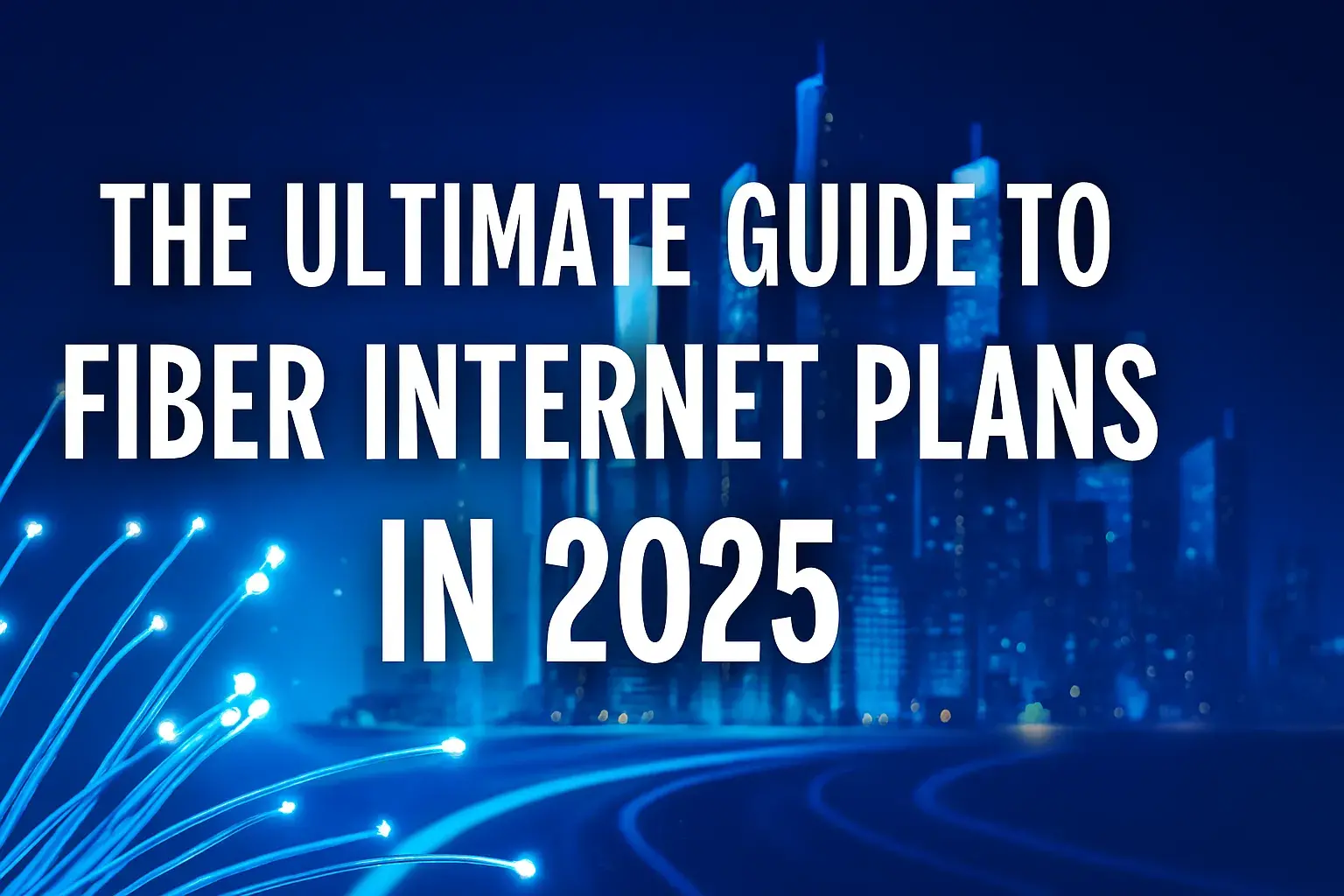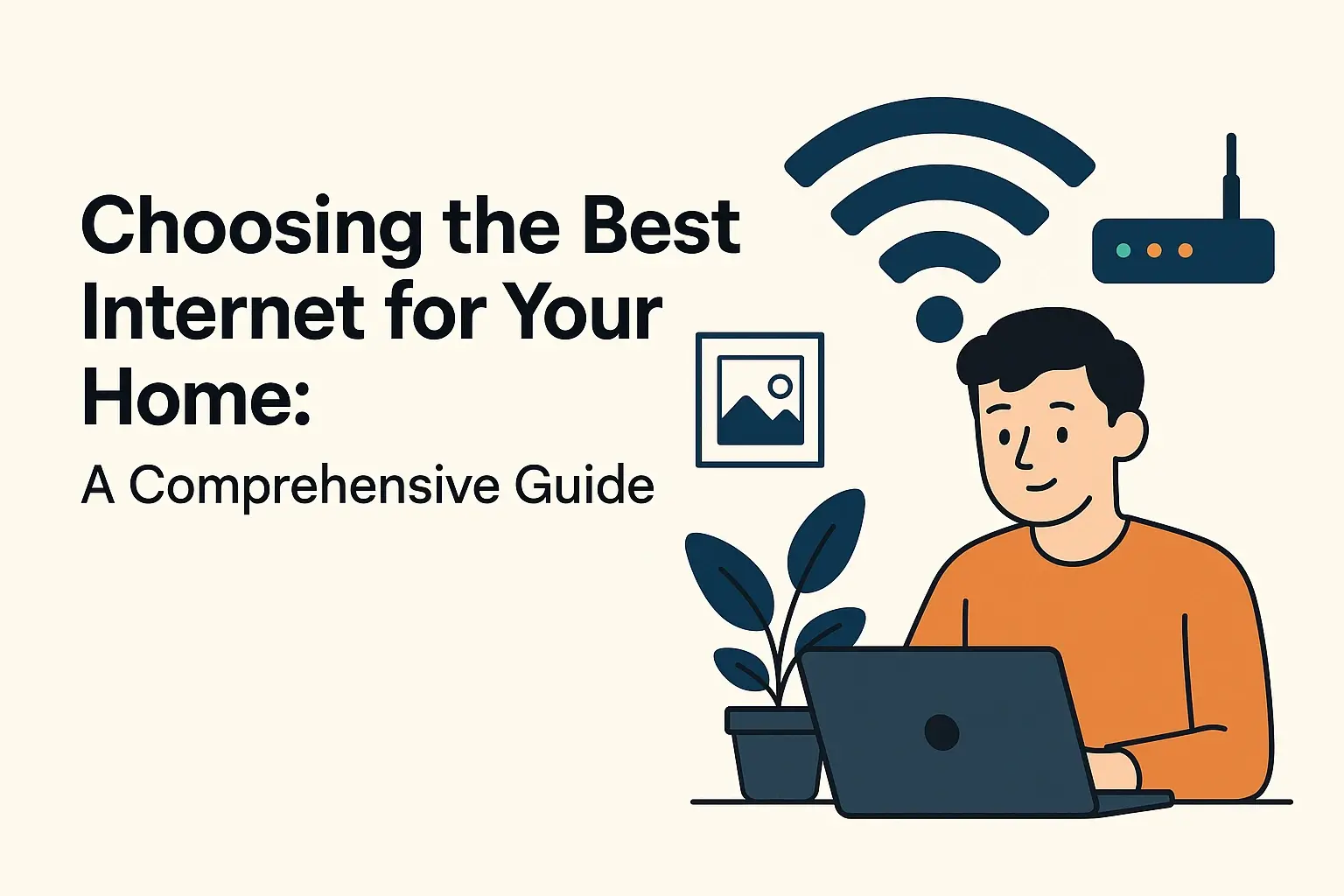Fiber Optic Internet: Speed, Cost, and Benefits Explained
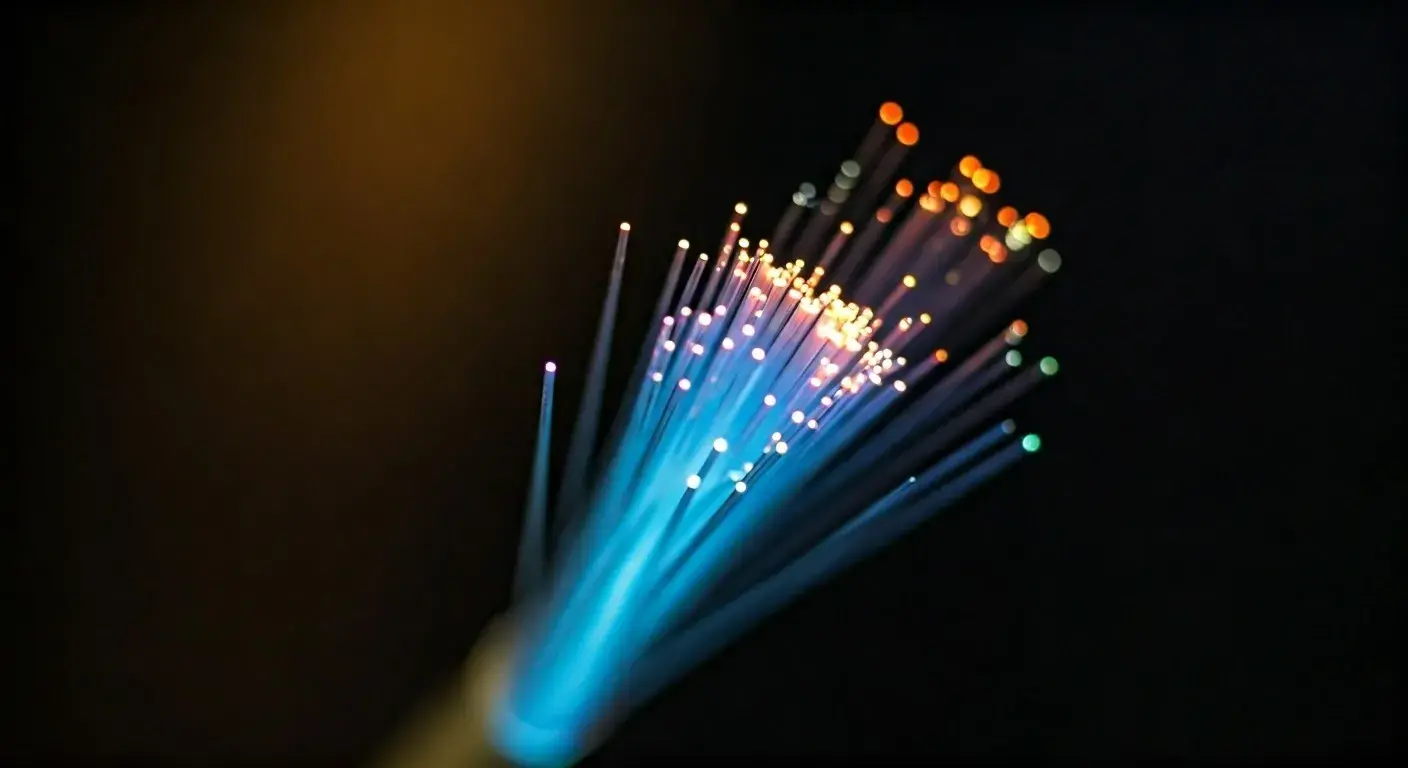
Discover the transformative power of fiber optic internet. This comprehensive guide dives deep into fiber's unparalleled speed, realistic cost expectations, and the myriad of benefits it offers, empowering you to make an informed decision for your home or business in 2025.
What is Fiber Optic Internet?
Fiber optic internet, often referred to as "fiber," represents the pinnacle of broadband technology. Unlike traditional internet services that rely on copper wires, fiber uses thin strands of glass or plastic to transmit data as pulses of light. This fundamental difference unlocks unprecedented speeds, reliability, and capacity, making it the ideal choice for modern digital demands.
How Fiber Optic Internet Works
The magic of fiber optic internet lies in its physical medium and the way it transmits information. Here's a breakdown of the process:
- Light Signals: Data is converted into light signals by a transmitter at the internet service provider's (ISP) end.
- Glass Strands: These light signals travel through incredibly thin strands of glass, thinner than a human hair, encased in protective layers. These strands are bundled together to form a fiber optic cable.
- Total Internal Reflection: The light pulses bounce off the inner walls of the glass strands through a phenomenon called total internal reflection. This allows the light to travel long distances with minimal signal loss or degradation.
- Receiving End: At the destination (your home or business), a receiver converts the light signals back into digital data that your devices can understand.
This light-based transmission is the key differentiator. It bypasses the electrical interference and signal degradation issues inherent in copper wiring, paving the way for significantly faster and more consistent performance.
The Infrastructure Behind Fiber
Deploying fiber optic networks is a significant undertaking. It involves laying new cables, often underground, to connect homes and businesses directly to the ISP's network. This "fiber-to-the-home" (FTTH) or "fiber-to-the-premises" (FTTP) architecture ensures that the full potential of fiber technology is realized by every subscriber. While the initial rollout can be extensive, the long-term benefits in terms of speed, capacity, and future-proofing are substantial.
Fiber Optic Internet Speed Explained
Speed is arguably the most compelling reason to consider fiber optic internet. The light-speed transmission capabilities offer a dramatic leap over older technologies.
Download and Upload Speeds
Fiber optic internet typically offers symmetrical speeds, meaning your download and upload speeds are the same. This is a stark contrast to cable or DSL, where upload speeds are usually a fraction of download speeds.
- Download Speeds: These determine how quickly you can receive data from the internet, crucial for streaming, browsing, and downloading files. Fiber plans commonly offer speeds ranging from 100 Mbps to 10 Gbps (gigabits per second), with many residential plans starting at 300 Mbps or 500 Mbps.
- Upload Speeds: These determine how quickly you can send data to the internet, vital for video conferencing, online gaming, uploading large files, and cloud backups. With fiber, if you have a 500 Mbps download plan, you likely have 500 Mbps upload as well. This is a game-changer for remote work and content creation.
As of 2025, residential fiber plans offering 1 Gbps download and upload are becoming increasingly common and affordable in many areas. Businesses can access even higher tiers, reaching 10 Gbps and beyond.
Latency and Jitter
Beyond raw speed, latency and jitter are critical for a smooth online experience, especially for real-time applications.
- Latency: This is the time it takes for a data packet to travel from your device to a server and back. Lower latency means a more responsive connection. Fiber optic internet boasts incredibly low latency, often in the single-digit milliseconds (ms). This translates to near-instantaneous responses in online games, video calls, and web browsing.
- Jitter: This refers to the variation in latency over time. High jitter can cause choppy audio and video during calls or lag spikes in gaming. Fiber's stable light-based transmission results in very low jitter, ensuring a consistent and predictable online experience.
For activities like competitive online gaming, live streaming, or critical business communications, low latency and minimal jitter are as important as high bandwidth, and fiber excels in both.
Real-World Speed Comparisons
To put fiber speeds into perspective, consider these 2025 examples:
- Downloading a Full HD Movie (approx. 5 GB):
- With a 50 Mbps cable connection: ~13-14 minutes
- With a 500 Mbps fiber connection: ~1 minute
- With a 1 Gbps fiber connection: ~30-40 seconds
- Uploading a Large File (e.g., 10 GB video project):
- With a 20 Mbps upload cable connection: ~1 hour 20 minutes
- With a 500 Mbps upload fiber connection: ~2 minutes 40 seconds
- Video Conferencing: While many services can run on lower speeds, fiber's symmetrical bandwidth and low latency ensure crystal-clear video and audio with no dropouts, even with multiple participants and screen sharing.
These comparisons highlight the dramatic improvement fiber offers for data-intensive tasks.
Fiber Optic Internet Cost in 2025
The cost of fiber optic internet has become more competitive, making it an accessible upgrade for many. However, it's important to understand the pricing structure.
Average Monthly Costs
In 2025, the average monthly cost for residential fiber optic internet plans typically ranges from $60 to $100 for speeds between 300 Mbps and 1 Gbps. Higher speeds, such as 2 Gbps or 5 Gbps, can cost upwards of $100 to $150 per month, depending on the provider and location. Business plans with dedicated fiber lines can be significantly more expensive, often starting at $100-$200 and going up to thousands of dollars for enterprise-level services.
Installation and Equipment Fees
Initial setup costs can vary.
- Installation Fees: Some providers offer free installation, especially during promotional periods or for new customers. Others may charge a one-time fee ranging from $50 to $200. This fee often covers the technician's visit and the physical connection of the fiber line to your premises.
- Equipment Fees: Most fiber providers include the necessary modem/router (often called an Optical Network Terminal or ONT) with their service. However, some might charge a monthly rental fee for this equipment, typically between $10 and $15. Purchasing your own compatible router can sometimes be an option to avoid these fees, but ensure it supports the speeds you are subscribing to and is compatible with your ISP's network.
Factors Influencing Cost
Several factors determine the price you'll pay for fiber internet:
- Speed Tier: Higher bandwidth plans naturally cost more.
- Provider: Different ISPs have varying pricing strategies and market competition in your area.
- Location: In areas with high competition or where fiber infrastructure is already well-established, prices might be lower. Rural areas or new deployments might have higher costs due to infrastructure investment.
- Promotions and Bundles: ISPs often offer introductory discounts, bundle deals with TV or phone services, or loyalty rewards that can reduce the overall cost.
- Contract Length: Some plans require a 12- or 24-month contract, which might offer a lower monthly rate compared to month-to-month plans.
Value for Money Considerations
While fiber might have a higher sticker price than some DSL or older cable plans, its value proposition is strong. The symmetrical speeds, lower latency, and superior reliability mean a better experience for everything you do online. For households with multiple users, heavy streaming, online gaming, or remote work needs, the performance gains often justify the cost. Consider the total cost of ownership, including the improved productivity and enhanced entertainment that fiber enables. For instance, a slightly higher monthly fee for a fiber plan might save you frustration and lost time compared to a cheaper, slower connection.
Key Benefits of Fiber Optic Internet
The advantages of fiber optic internet extend far beyond just speed, offering a holistic improvement to your online life.
Unmatched Speed and Performance
As detailed earlier, the sheer speed and symmetrical bandwidth of fiber are its primary draws. This translates to:
- Seamless 4K/8K video streaming without buffering.
- Instantaneous downloads and uploads of large files.
- Lag-free online gaming experiences.
- Effortless video conferencing with multiple participants.
- Smooth operation of multiple connected devices simultaneously.
Superior Reliability and Stability
Fiber optic cables are less susceptible to environmental interference than copper wires.
- Immunity to Electromagnetic Interference (EMI): Unlike copper, fiber optic cables are not affected by electrical signals from power lines, appliances, or weather conditions like lightning. This means a more stable connection, especially during storms.
- Less Signal Degradation: Light signals travel much further in fiber optic cables with minimal loss of strength. This ensures consistent speeds and performance, even for users located farther from the ISP's central office.
- Durability: While glass, fiber optic cables are surprisingly robust when properly installed and protected within conduit. They are also resistant to corrosion.
This reliability is crucial for businesses where downtime can be costly and for households that depend on a consistent connection for work, education, and communication.
Enhanced Security
Fiber optic cables are inherently more secure than copper cables.
- Difficult to Tap: Tapping into a fiber optic cable without detection is significantly harder than with copper. Any attempt to physically access or tamper with the cable will disrupt the light signal, immediately alerting the ISP.
- No Signal Leakage: Unlike copper wires, fiber optic cables do not emit electromagnetic radiation, making it impossible to intercept data wirelessly through "eavesdropping" techniques.
This makes fiber a more secure choice for sensitive data transmission, particularly for businesses handling confidential information.
Future-Proofing Your Connectivity
The demand for bandwidth is only increasing. Technologies like virtual reality (VR), augmented reality (AR), smart homes with numerous connected devices, and higher-resolution streaming all require more data. Fiber optic infrastructure has the capacity to meet these future demands.
- Scalability: The existing fiber optic infrastructure can often be upgraded to higher speeds by simply changing the equipment at either end, without needing to replace the physical cables. This makes it a long-term investment.
- Capacity: Fiber optic cables can carry vastly more data than copper cables, providing ample bandwidth for years to come.
By choosing fiber now, you are investing in a network that can support the technological advancements of the next decade and beyond.
Environmental Advantages
Fiber optic cables offer some environmental benefits:
- Energy Efficiency: Fiber optic systems generally consume less energy than copper-based systems for transmitting the same amount of data over long distances.
- Reduced Need for Frequent Upgrades: Due to its high capacity and scalability, fiber infrastructure may require fewer physical replacements and upgrades over its lifespan compared to older technologies, leading to less waste.
Fiber Optic Internet vs. Other Technologies
Understanding how fiber compares to other common internet technologies helps clarify its advantages.
Fiber vs. Cable
Cable internet uses coaxial cables, the same type used for cable TV, to transmit data.
| Feature | Fiber Optic Internet | Cable Internet |
|---|---|---|
| Technology | Glass/plastic strands transmitting light | Coaxial copper cables transmitting electrical signals |
| Speeds (Typical Residential 2025) | 300 Mbps - 10 Gbps (Symmetrical) | 50 Mbps - 1 Gbps (Asymmetrical, upload much lower) |
| Latency | Very Low (single-digit ms) | Low to Moderate (20-50 ms typical) |
| Reliability | High (immune to EMI) | Moderate (can be affected by network congestion and EMI) |
| Cost (Monthly) | $60 - $100+ for 300 Mbps - 1 Gbps | $50 - $80 for 100 Mbps - 500 Mbps |
Cable is widely available and often cheaper, but fiber offers superior performance, especially for uploads and latency-sensitive applications.
Fiber vs. DSL
Digital Subscriber Line (DSL) internet uses existing copper telephone lines to transmit data.
| Feature | Fiber Optic Internet | DSL Internet |
|---|---|---|
| Technology | Glass/plastic strands transmitting light | Copper telephone lines transmitting electrical signals |
| Speeds (Typical Residential 2025) | 300 Mbps - 10 Gbps (Symmetrical) | 5 Mbps - 100 Mbps (Asymmetrical, upload much lower) |
| Latency | Very Low (single-digit ms) | Moderate to High (50-100+ ms typical) |
| Reliability | High (immune to EMI) | Low (highly dependent on distance from exchange, susceptible to EMI) |
| Cost (Monthly) | $60 - $100+ for 300 Mbps - 1 Gbps | $30 - $60 for 25 Mbps - 100 Mbps |
DSL is often the most affordable option and is available in many rural areas where other broadband types are not. However, its speeds and reliability are significantly lower than fiber.
Fiber vs. 5G Home Internet
5G home internet is a wireless technology that uses the 5th generation of cellular network technology to deliver internet to your home.
| Feature | Fiber Optic Internet | 5G Home Internet |
|---|---|---|
| Technology | Glass/plastic strands transmitting light | Wireless cellular (5G network) |
| Speeds (Typical Residential 2025) | 300 Mbps - 10 Gbps (Symmetrical) | 50 Mbps - 1 Gbps (Asymmetrical, highly variable) |
| Latency | Very Low (single-digit ms) | Low to Moderate (20-60 ms typical, variable) |
| Reliability | Very High (immune to EMI, stable) | Moderate to High (can be affected by signal strength, weather, network congestion, device placement) |
| Installation | Requires physical cable installation | Self-installation with a modem/router |
| Cost (Monthly) | $60 - $100+ for 300 Mbps - 1 Gbps | $50 - $90 for 100 Mbps - 300 Mbps (often with unlimited data) |
5G home internet offers a convenient, wireless alternative with decent speeds and potentially unlimited data. However, fiber generally provides more consistent, symmetrical speeds and lower latency, making it superior for demanding applications. 5G's performance can fluctuate more significantly. For a detailed comparison, see our Fiber vs. 5G Home Internet section.
Is Fiber Optic Internet Available in My Area?
The biggest hurdle for many consumers is the availability of fiber optic internet. Fiber deployment is ongoing but not yet universal.
Checking Availability
The most direct way to check for fiber availability is to visit the websites of major internet service providers (ISPs) and enter your address. Many providers have dedicated "check availability" tools.
- Major Providers: Look for companies like AT&T, Verizon Fios, Google Fiber, CenturyLink Fiber, Frontier Fiber, and local municipal broadband initiatives.
- Third-Party Comparison Sites: Websites that compare internet plans often have availability checkers that aggregate information from multiple providers.
- Contacting ISPs Directly: If online tools are unclear, calling customer service for ISPs known to offer fiber in your region can provide definitive answers.
Availability can vary even within neighborhoods. Sometimes, only certain streets or blocks have access to fiber infrastructure.
What to Do If Fiber is Not Available
If fiber optic internet isn't yet an option for you, don't despair. Consider these alternatives:
- Cable Internet: If available, cable offers a good balance of speed and price for most users.
- 5G Home Internet: This wireless option is rapidly expanding and can provide speeds comparable to mid-tier cable plans.
- DSL: While slower, DSL is often the only option in very rural areas and can be sufficient for basic internet needs like email and web browsing.
- Satellite Internet: This is typically the slowest and most expensive option, often with data caps, but it's available virtually anywhere with a clear view of the sky.
- Advocate for Fiber: Many providers and municipal governments are influenced by customer demand. Express your interest in fiber optic service to your current ISP and local representatives. Some initiatives allow communities to petition for fiber build-outs.
Keep checking availability periodically, as fiber networks are constantly expanding.
Choosing the Right Fiber Plan
Once you've confirmed fiber is available, selecting the best plan requires careful consideration.
Understanding Your Needs
Assess your household's internet usage patterns:
- Number of Users: How many people will be using the internet simultaneously?
- Device Count: How many devices (computers, phones, smart TVs, gaming consoles, smart home devices) are connected?
- Primary Activities:
- Streaming: Do you primarily watch in HD, 4K, or 8K?
- Gaming: Are you a casual gamer or a competitive online player requiring low latency?
- Remote Work: Do you participate in frequent video conferences, upload/download large files, or use cloud-based applications?
- Content Creation: Do you upload large videos, photos, or other media regularly?
- General Browsing: Email, social media, light web browsing.
For example, a single person who only browses the web might be fine with a 300 Mbps plan. A family of four with multiple streamers, gamers, and remote workers will likely need 1 Gbps or higher to avoid congestion.
Comparing Providers
Don't settle for the first fiber provider you find.
- Speed Tiers: Compare the advertised download and upload speeds.
- Pricing: Look at the monthly cost, introductory offers, and any potential price increases after the promotional period.
- Contract Terms: Are you required to sign a long-term contract? What are the early termination fees?
- Installation & Equipment Fees: Factor in any one-time or recurring costs for setup and hardware.
- Data Caps: While most fiber plans offer unlimited data, always verify this.
- Customer Reviews: Research customer satisfaction with the provider's service, reliability, and customer support.
Reading the Fine Print
Before signing up, pay close attention to:
- Promotional Pricing Expiration: Understand when the introductory rate ends and what the standard rate will be.
- Data Caps and Overage Fees: Ensure there are no hidden data limits.
- Equipment Rental Costs: Clarify if you must rent a modem/router and the monthly fee.
- Early Termination Fees (ETFs): Know the cost if you need to cancel your service before the contract ends.
- Installation Policies: Understand what the installation process entails and any potential charges.
A bit of due diligence can save you money and headaches down the line.
Fiber Optic Internet Installation Process: What to Expect
Getting fiber internet installed is typically a straightforward process, but understanding what happens can help manage expectations.
Pre-Installation Checks
Before the technician arrives, the ISP will likely perform some checks:
- Serviceability Confirmation: They will confirm that fiber is indeed available at your address.
- Drop Cable Path: They will assess the best route for the fiber optic cable to enter your home from the nearest utility pole or underground access point. This might involve discussing placement with you.
- Interior Placement: You'll need to decide where you want the Optical Network Terminal (ONT) installed, which is the device that converts the light signal to an electrical signal. This is usually near where your internet equipment (router) will be located.
Ensure clear access to the exterior and interior areas where the cable will be run.
The Installation Day
On the scheduled day, a qualified technician will arrive. The process generally involves:
- Exterior Connection: The technician will run a thin fiber optic cable from the street (pole or underground box) to your house. This might involve drilling a small hole through an exterior wall if necessary.
- Interior Wiring: The fiber cable is then run from the entry point to the chosen location for the ONT.
- ONT Installation: The ONT is mounted and connected to the fiber cable.
- Router Connection: Your router (either provided by the ISP or your own) is connected to the ONT via an Ethernet cable.
- Service Activation: The technician will activate your service and test the connection to ensure it's working correctly and delivering the subscribed speeds.
- Demonstration: They may offer a brief demonstration of how the equipment works and answer any initial questions.
The entire process typically takes 2-4 hours, depending on the complexity of the installation.
Post-Installation Setup
Once the technician leaves, you'll need to:
- Connect Your Devices: Connect your computers, smartphones, smart TVs, and other devices to your Wi-Fi network (or via Ethernet cable).
- Configure Wi-Fi: Set up your Wi-Fi network name (SSID) and password.
- Test Speeds: Run speed tests using reputable online tools (e.g., Speedtest.net) to verify you're getting the speeds you're paying for.
- Install Software: If your ISP provided specific software or apps, install them.
If you encounter any issues, contact your ISP's customer support.
Conclusion: Making the Switch to Fiber
Fiber optic internet is no longer a futuristic luxury; it's a present-day necessity for anyone seeking the best possible online experience. In 2025, its advantages in speed, reliability, and future-proofing are undeniable. While the initial cost might seem higher than older technologies, the value derived from its symmetrical bandwidth, ultra-low latency, and consistent performance for everything from remote work and online education to high-definition streaming and competitive gaming is substantial. The ongoing expansion of fiber networks means more households and businesses than ever before can now access this superior technology.
We strongly recommend evaluating your current internet service and exploring fiber optic options in your area. By understanding the speed capabilities, cost factors, and inherent benefits, you can make an informed decision that will significantly enhance your digital life for years to come. Don't let outdated infrastructure hold you back; embrace the future of connectivity with fiber optic internet.
